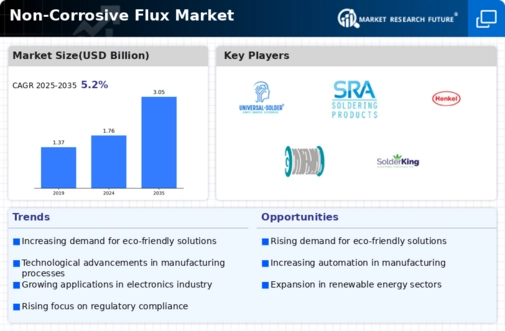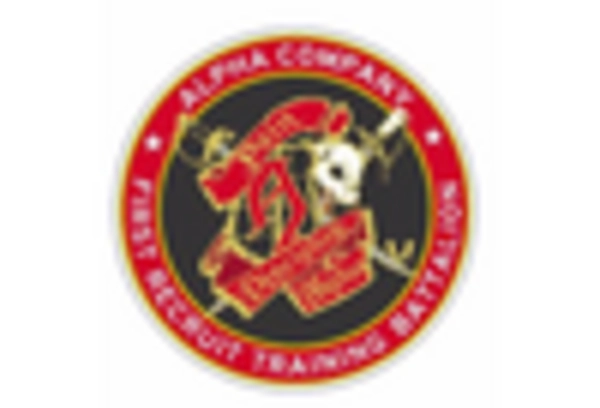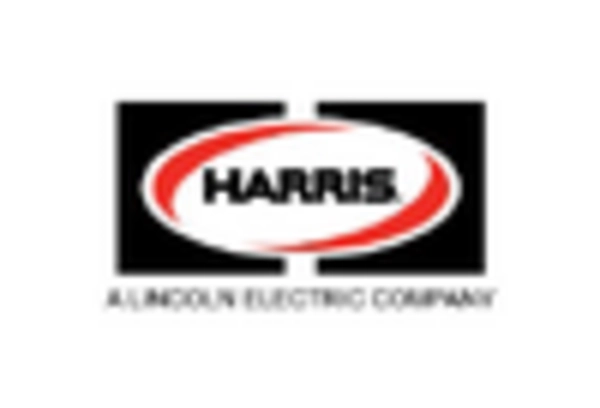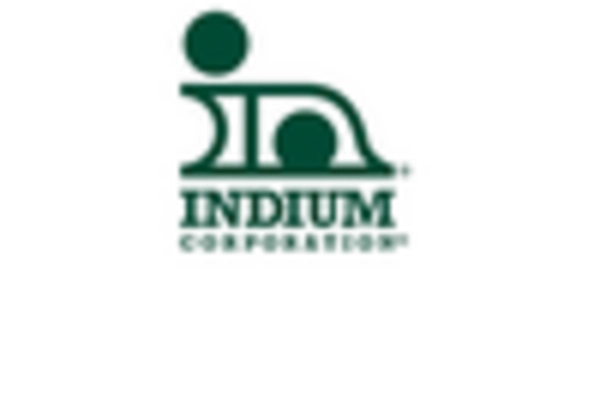Rising Demand for Eco-Friendly Solutions
The increasing emphasis on sustainability is driving the Non-Corrosive Flux Market. As industries seek to minimize their environmental footprint, the demand for eco-friendly flux solutions is surging. Non-corrosive fluxes, which are less harmful to the environment compared to traditional options, are becoming the preferred choice among manufacturers. This shift is evident in sectors such as electronics and automotive, where companies are adopting greener practices. The market for non-corrosive flux is projected to grow at a compound annual growth rate of approximately 5.2% over the next five years, reflecting a broader trend towards sustainable manufacturing processes. As consumers and regulatory bodies alike push for environmentally responsible products, the Non-Corrosive Flux Market is likely to see continued growth.
Growth in Electronics and Automotive Sectors
The expansion of the electronics and automotive sectors is a key driver for the Non-Corrosive Flux Market. With the proliferation of electronic devices and the increasing complexity of automotive systems, the need for reliable soldering materials has never been greater. Non-corrosive fluxes are particularly valued in these industries for their ability to enhance solder joint integrity while minimizing corrosion risks. The electronics sector alone is expected to witness a growth rate of around 6% annually, which will likely bolster the demand for non-corrosive flux solutions. As these sectors continue to evolve, the Non-Corrosive Flux Market is poised to benefit from the rising need for high-performance materials.
Regulatory Pressures and Compliance Standards
Regulatory pressures are shaping the Non-Corrosive Flux Market as governments and organizations implement stricter compliance standards. These regulations often mandate the use of non-toxic and environmentally friendly materials in manufacturing processes. As a result, manufacturers are increasingly turning to non-corrosive fluxes to meet these requirements. The push for compliance not only enhances product safety but also opens up new market opportunities for non-corrosive flux manufacturers. Companies that adapt to these regulations are likely to gain a competitive edge, as they can offer products that align with both consumer expectations and legal standards. This trend is expected to drive growth in the Non-Corrosive Flux Market, as adherence to regulations becomes a priority.
Increased Focus on Product Quality and Reliability
The heightened focus on product quality and reliability is a significant driver for the Non-Corrosive Flux Market. As industries strive to enhance their product offerings, the role of non-corrosive fluxes becomes increasingly critical. These fluxes contribute to superior soldering performance, which is essential for ensuring the longevity and reliability of electronic components and assemblies. The demand for high-quality products is particularly pronounced in sectors such as aerospace and medical devices, where failure is not an option. As manufacturers prioritize quality assurance, the adoption of non-corrosive flux solutions is likely to rise, thereby propelling the growth of the Non-Corrosive Flux Market.
Technological Innovations in Manufacturing Processes
Technological advancements are significantly influencing the Non-Corrosive Flux Market. Innovations in manufacturing processes, such as automated soldering and advanced coating techniques, are enhancing the efficiency and effectiveness of non-corrosive fluxes. These technologies not only improve product quality but also reduce waste and energy consumption, aligning with the industry's sustainability goals. The integration of smart technologies, such as IoT and AI, into manufacturing is expected to further optimize the use of non-corrosive fluxes, leading to increased adoption. As manufacturers strive for higher precision and lower defect rates, the demand for advanced non-corrosive flux solutions is anticipated to rise, potentially expanding the market share of this segment.


















Leave a Comment